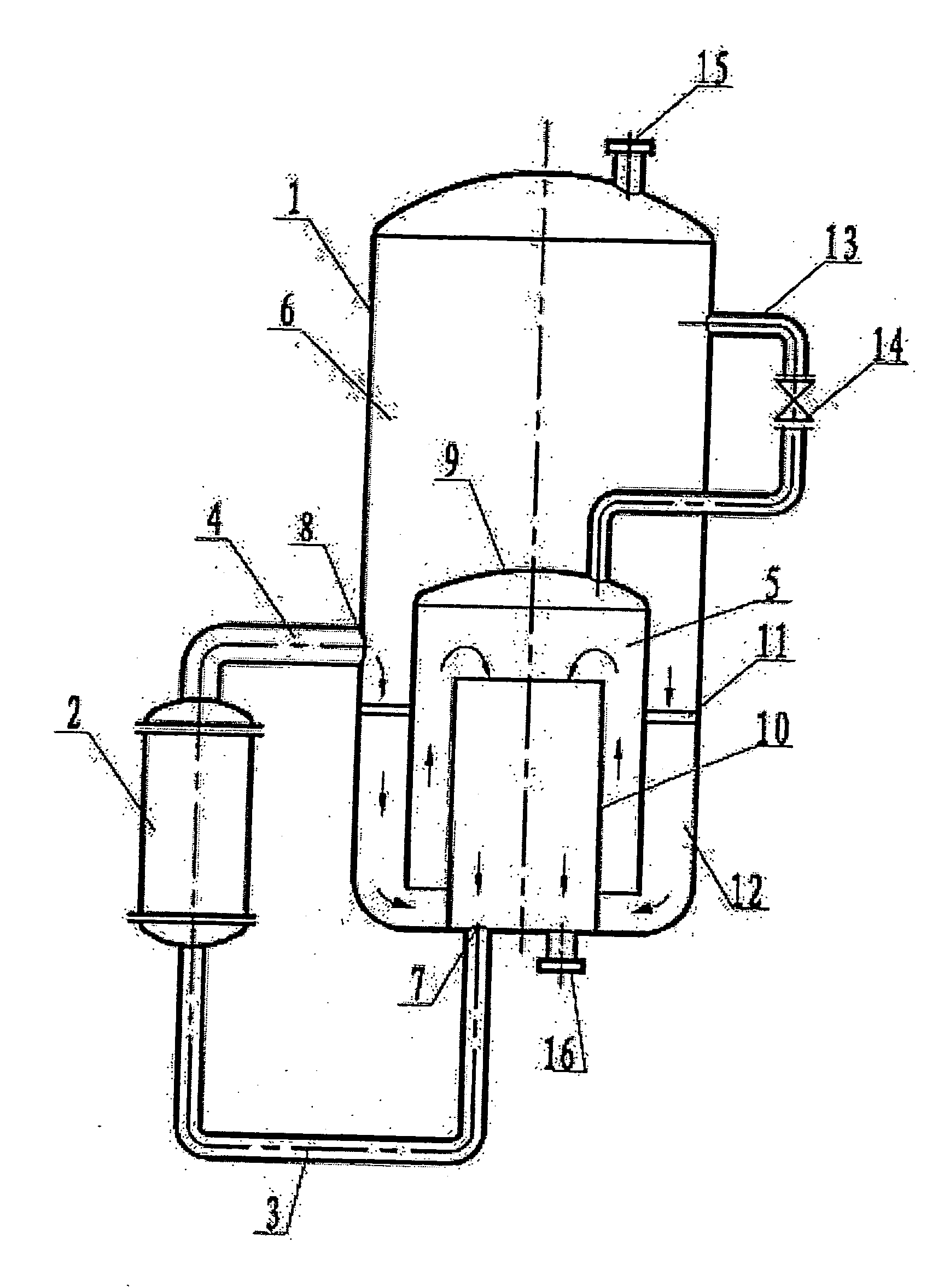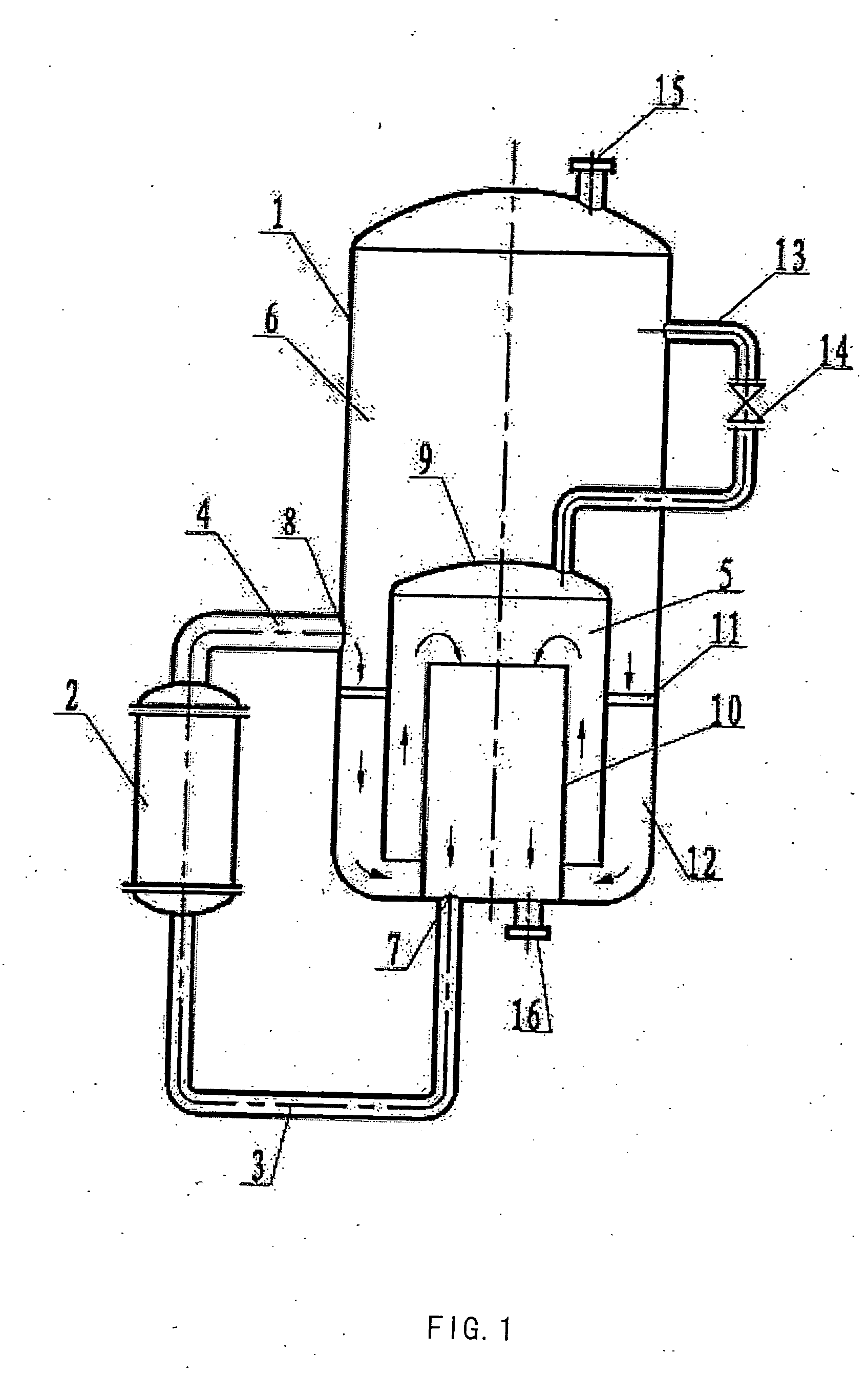Device for reaction or separation and a continuous esterification process using the device
- Summary
- Abstract
- Description
- Claims
- Application Information
AI Technical Summary
Benefits of technology
Problems solved by technology
Method used
Image
Examples
example
[0028] The esterification reactor was composed of an esterification heater heated with a hot vapor medium and a reaction kettle connecting in series with a U-shape pipe, wherein the heater was a tube heat exchanger and the reaction kettle was a jacketed cylinder structure. A slurry feed consisting of PTA and EG entered the system through a feed nozzle, mixed with the liquid circular materials from the inner chamber of the reaction kettle, and then entered the external circular shell and tube heat exchanger for heating. The molar ratio of EG to PTA was controlled at 1.8:1. The materials were heated to 282° C. by passing through the heater and converted to water and other by-products (e.g. diglycol, etc). In the reaction kettle, there was enough vapor space above the liquid level to prevent the entrainment. The vapor-liquid mixture sprayed from the heater was subjected to flash separation to remove water and the vapor of ethylene glycol, and entered the separation tower through the va...
PUM
| Property | Measurement | Unit |
|---|---|---|
| Temperature | aaaaa | aaaaa |
| Pressure | aaaaa | aaaaa |
| Pressure | aaaaa | aaaaa |
Abstract
Description
Claims
Application Information
 Login to View More
Login to View More - R&D
- Intellectual Property
- Life Sciences
- Materials
- Tech Scout
- Unparalleled Data Quality
- Higher Quality Content
- 60% Fewer Hallucinations
Browse by: Latest US Patents, China's latest patents, Technical Efficacy Thesaurus, Application Domain, Technology Topic, Popular Technical Reports.
© 2025 PatSnap. All rights reserved.Legal|Privacy policy|Modern Slavery Act Transparency Statement|Sitemap|About US| Contact US: help@patsnap.com



